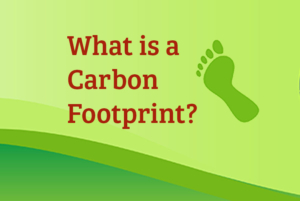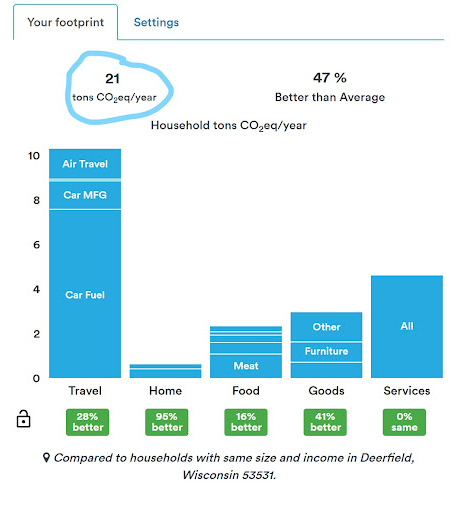What is a Carbon Footprint?
I’m sure you’ve heard of Bigfoot…
But have you heard of a Big Carbon Footprint?
A carbon footprint is the cumulative carbon waste and emissions attached to any individual, household or business. This means all the carbon emissions associated with driving, flying, using electricity, and purchasing or consumption habits that use fossil fuels as part of their processing.

Americans especially are known for our shopping habits and ability to ‘go big’. Bigger homes, bigger cars…all these things double the impact we are having on the earth in terms of pollution.
Pollution isn’t just from Smokestacks.
They might often be invisible, but carbon emissions are pollution and add to the warming of our atmosphere.
It’s probably intuitive that driving and flying would create carbon emission pollution in the air. In fact, almost all of our daily lives produce some form of pollution.
Some activities that people don’t think of in terms of pollution, but are in fact leading to accelerating amounts of greenhouse gasses include:
Food
Meat sources can be especially carbon intensive. The meat we eat is cumulative of everything that went into bringing it to our plate. This means not only the processing and transportation of that meat to a store, but the space, processing, and fertilizers associated with the food and grains that those (cows especially) ate before they became steaks!
The farther your food travels to get to you, the more carbon intensive it is.
As a solar cooperative based in Wisconsin, we are sorry to report that dairy is carbon intensive too. (Sorry Cheeseheads!) But solutions and alternatives are out there. You can reduce your footprint by buying locally, at farmer’s markets from farmers with sustainable processes! And check out the solar-powered dairies in Wisconsin!
Packaging
Plastic is made from fossil fuels by machinery running on fossil fuels.
All Plastic ever created, from the first bag – until now, is still in our environment.
Carbon emissions from producing and incinerating plastics amounts to 50 GIGATONS.
Devices
Even on standby mode, 5-10% of home energy use is sucked up by our devices and the average American pays over $100 annually when they don’t unplug devices.
How to Calculate your Personal Carbon Footprint
To calculate your personal carbon footprint you would add up all your travel, residential and consumption habits.
You can use UC Berkeley’s tool to see how you compare to averages in your area: https://coolclimate.berkeley.edu/calculator.
 With your results, you can use the CO2 emissions in the top left to see which one of Legacy Solar Co-op’s solar energy certificate subscriptions is right for you!
With your results, you can use the CO2 emissions in the top left to see which one of Legacy Solar Co-op’s solar energy certificate subscriptions is right for you!
Give it a try and you might be surprised by what you learn.
A Carbon Footprint can be Countered
If we hope to slow the devastating rate of climate change, we need to slow, reduce, and avoid our rate of pollution.
The good news is, you can counter your individual carbon footprint just like large businesses offset and counter theirs. You can do this by purchasing a subscription of solar renewable energy certificates.
Want to learn more? Consider countering your carbon footprint with solar renewable energy certificates (sRECs) and join Legacy’s Switch to Solar (S2S) Subscription program!
Contact Elise If you have any questions at all, or get started and counter your carbon footprint with Legacy Solar Co-op today!
Purchase sRECs

